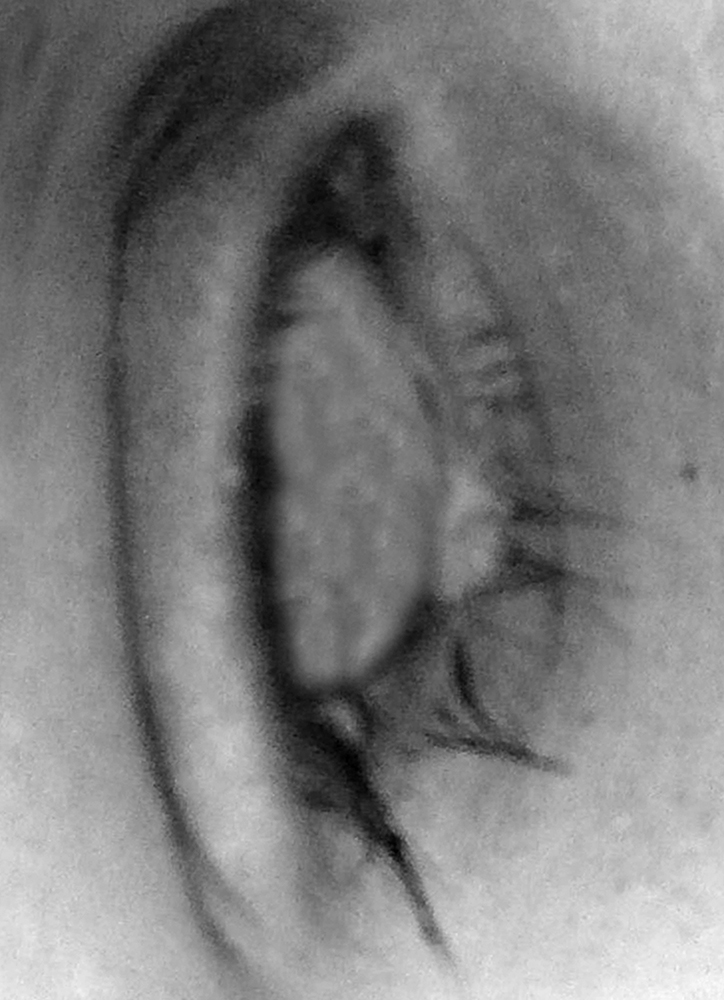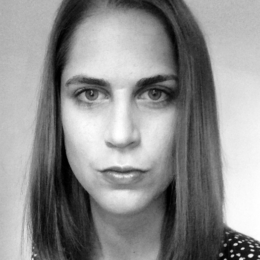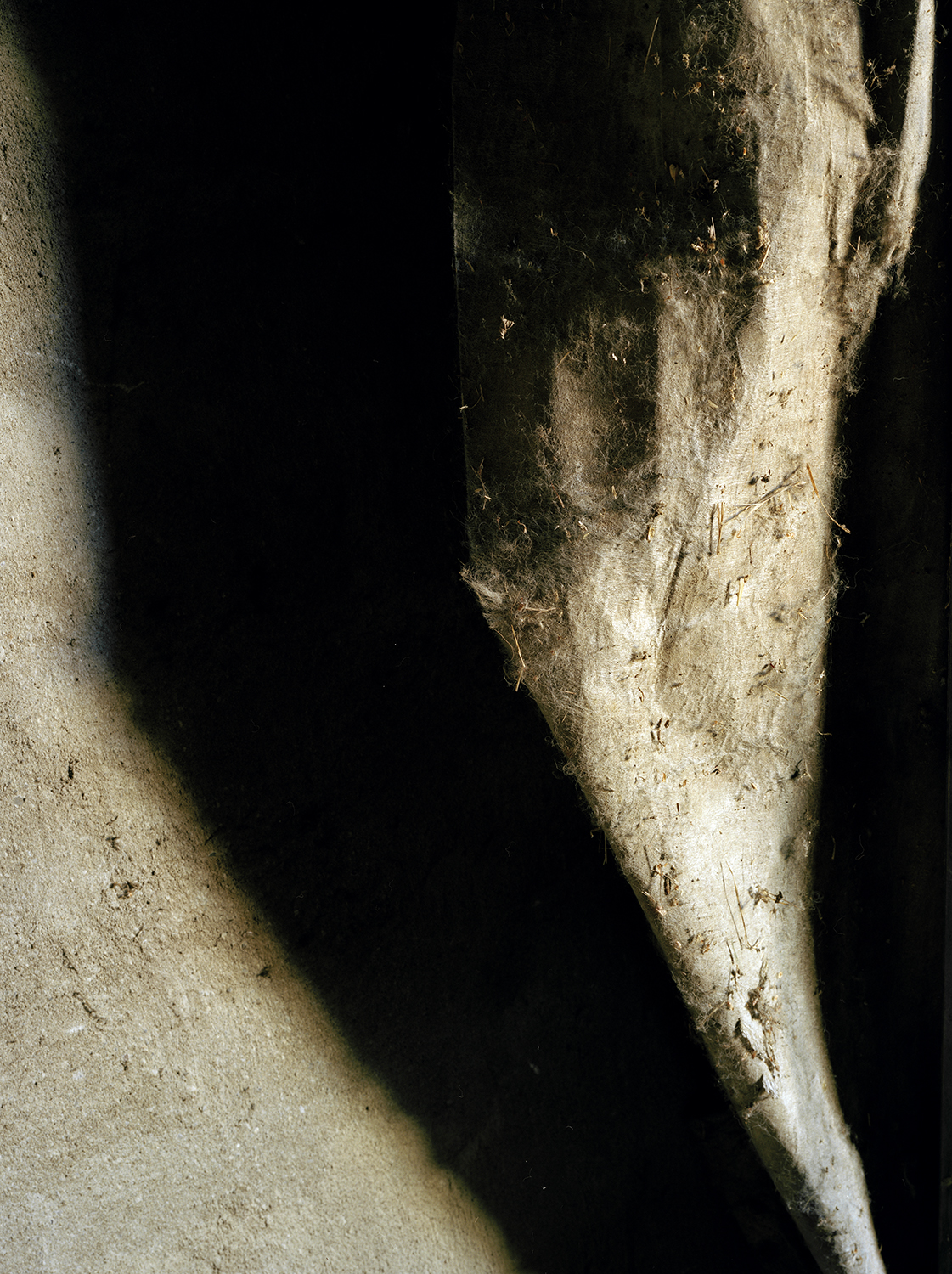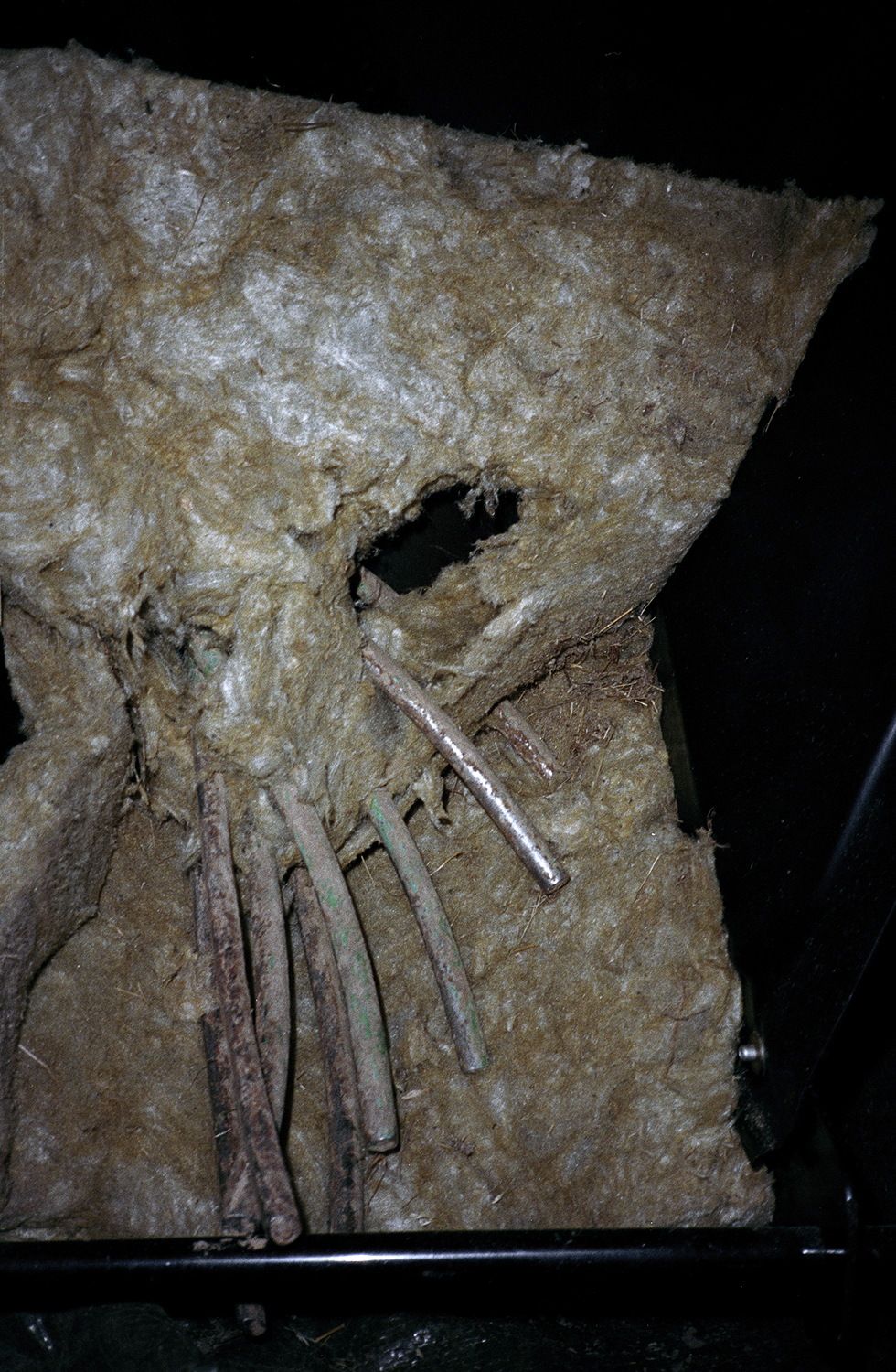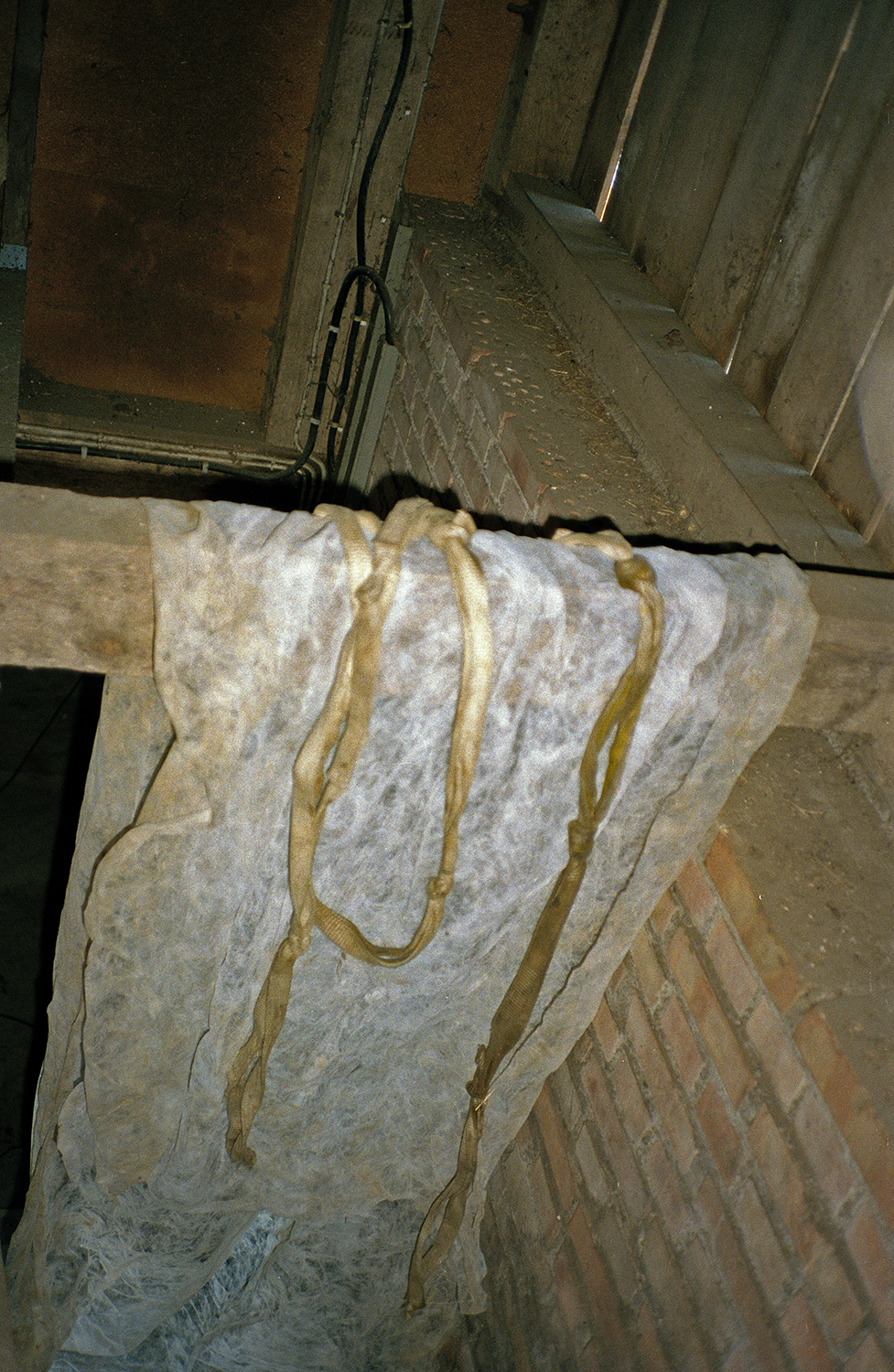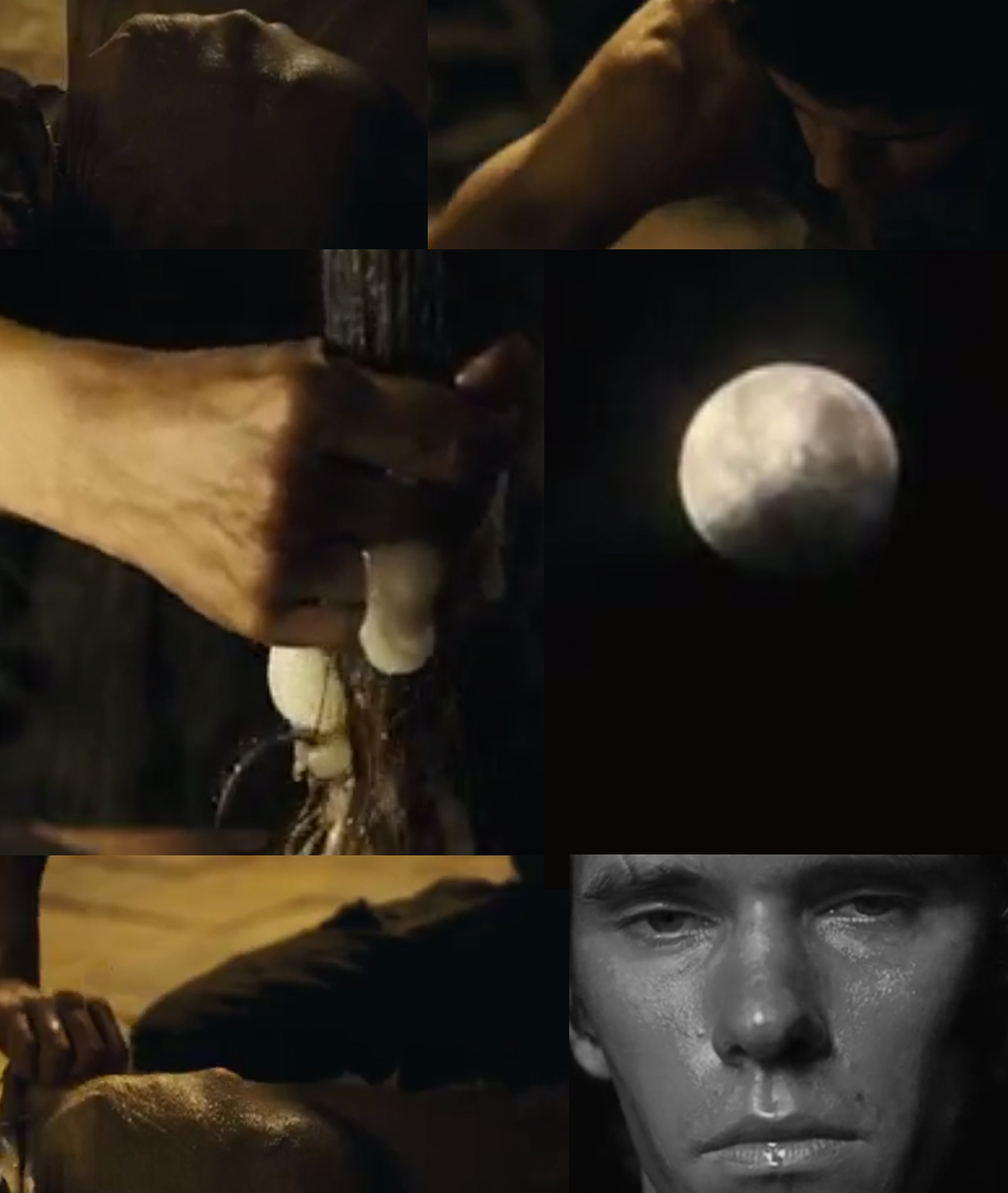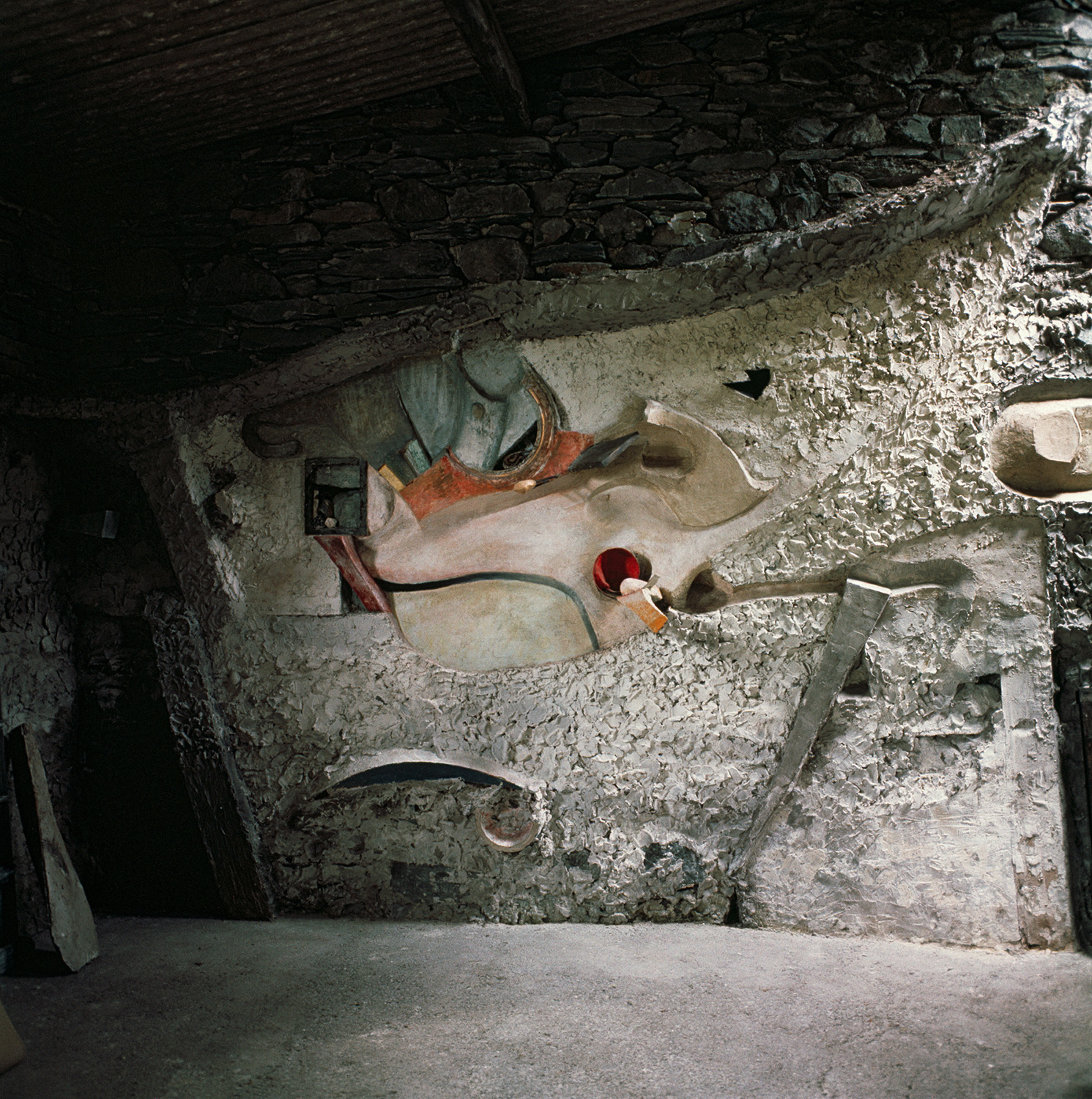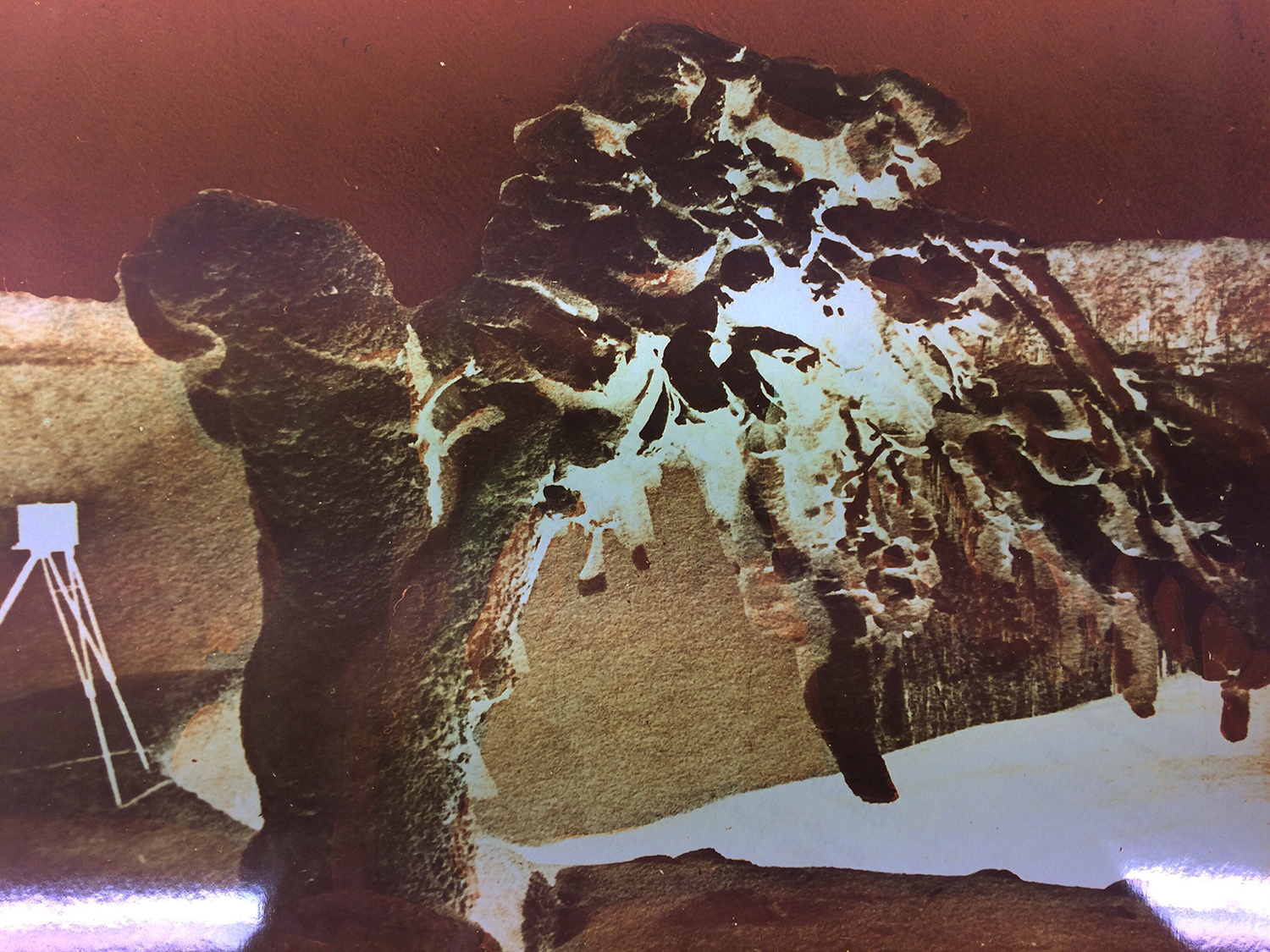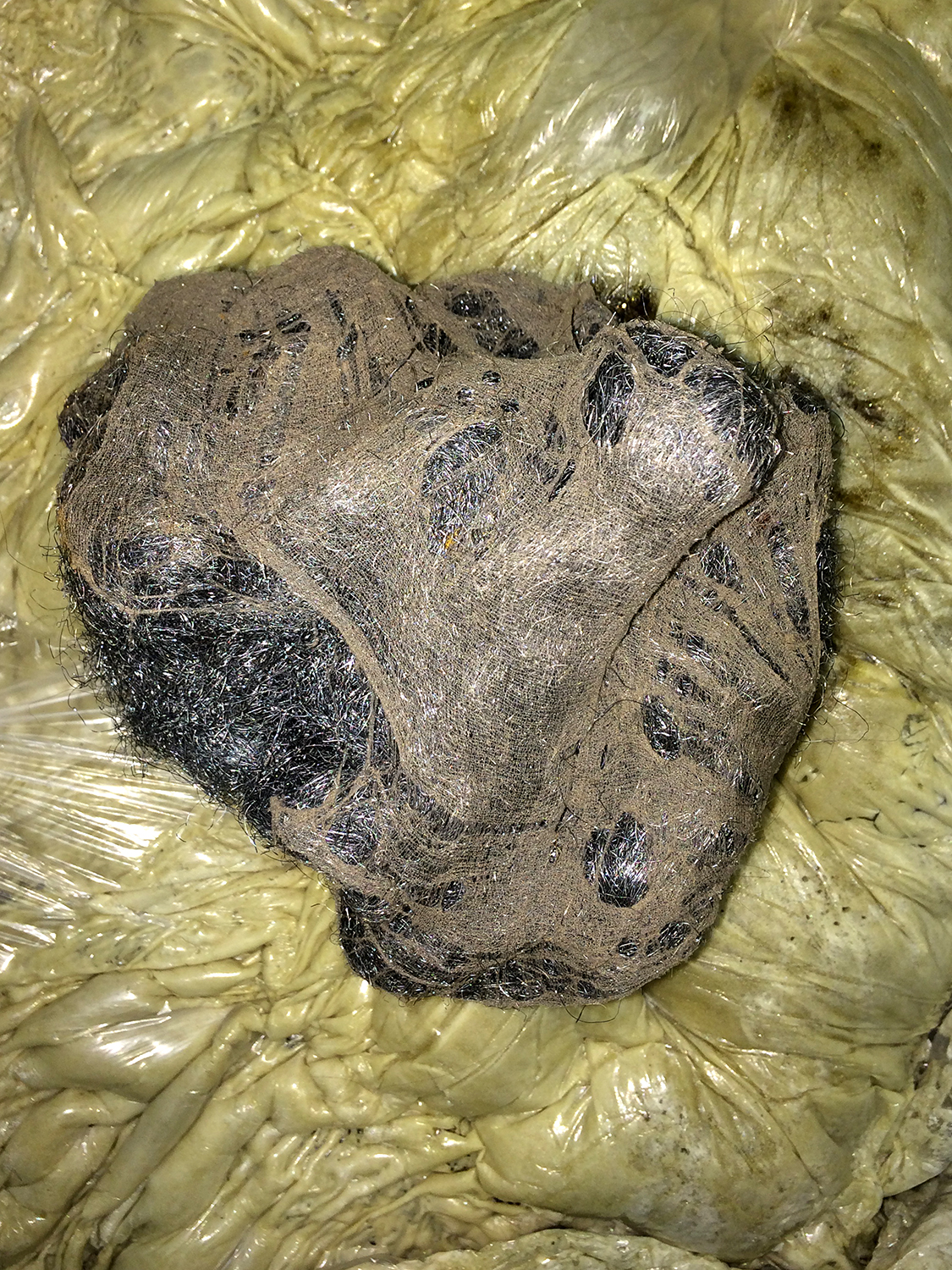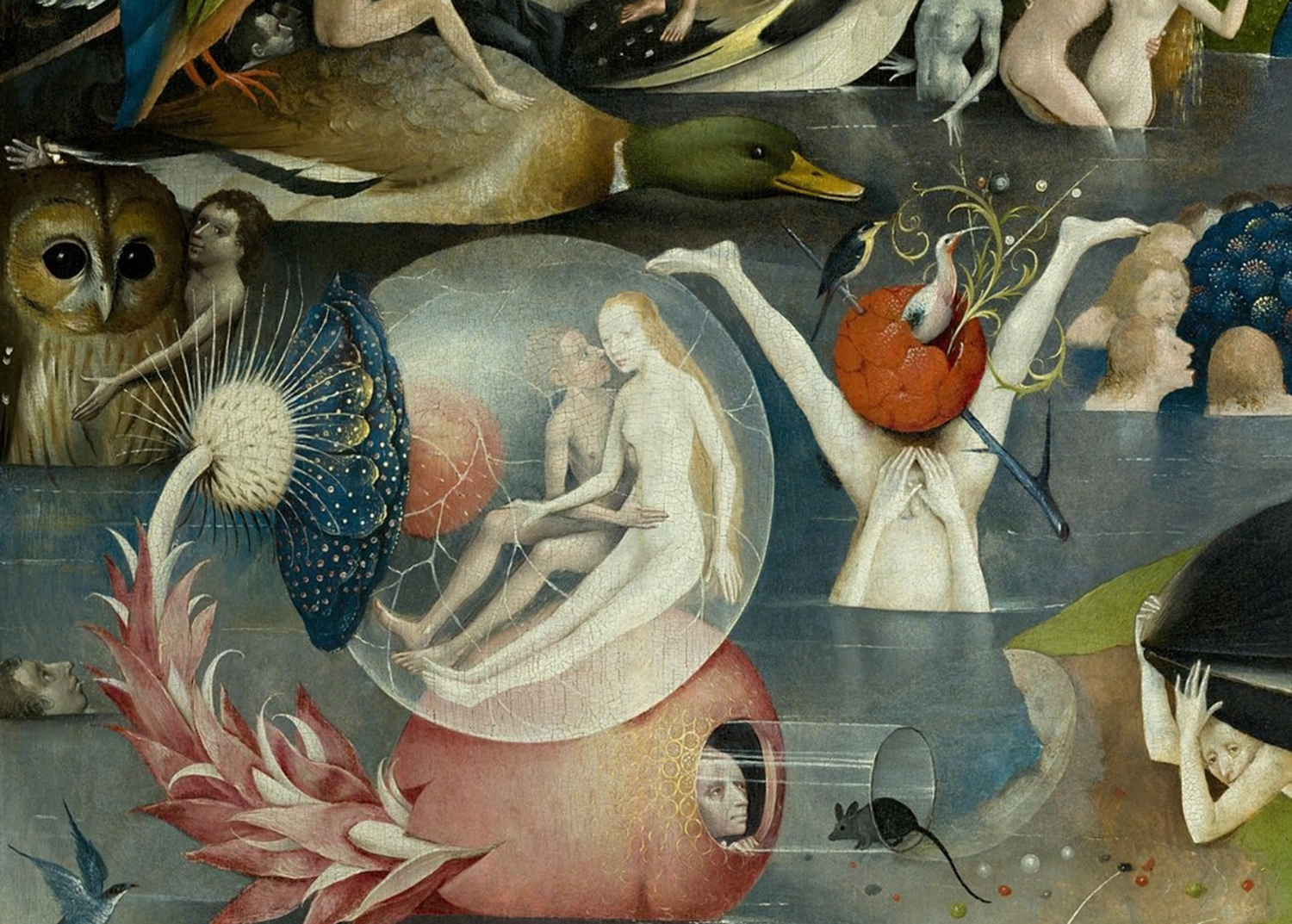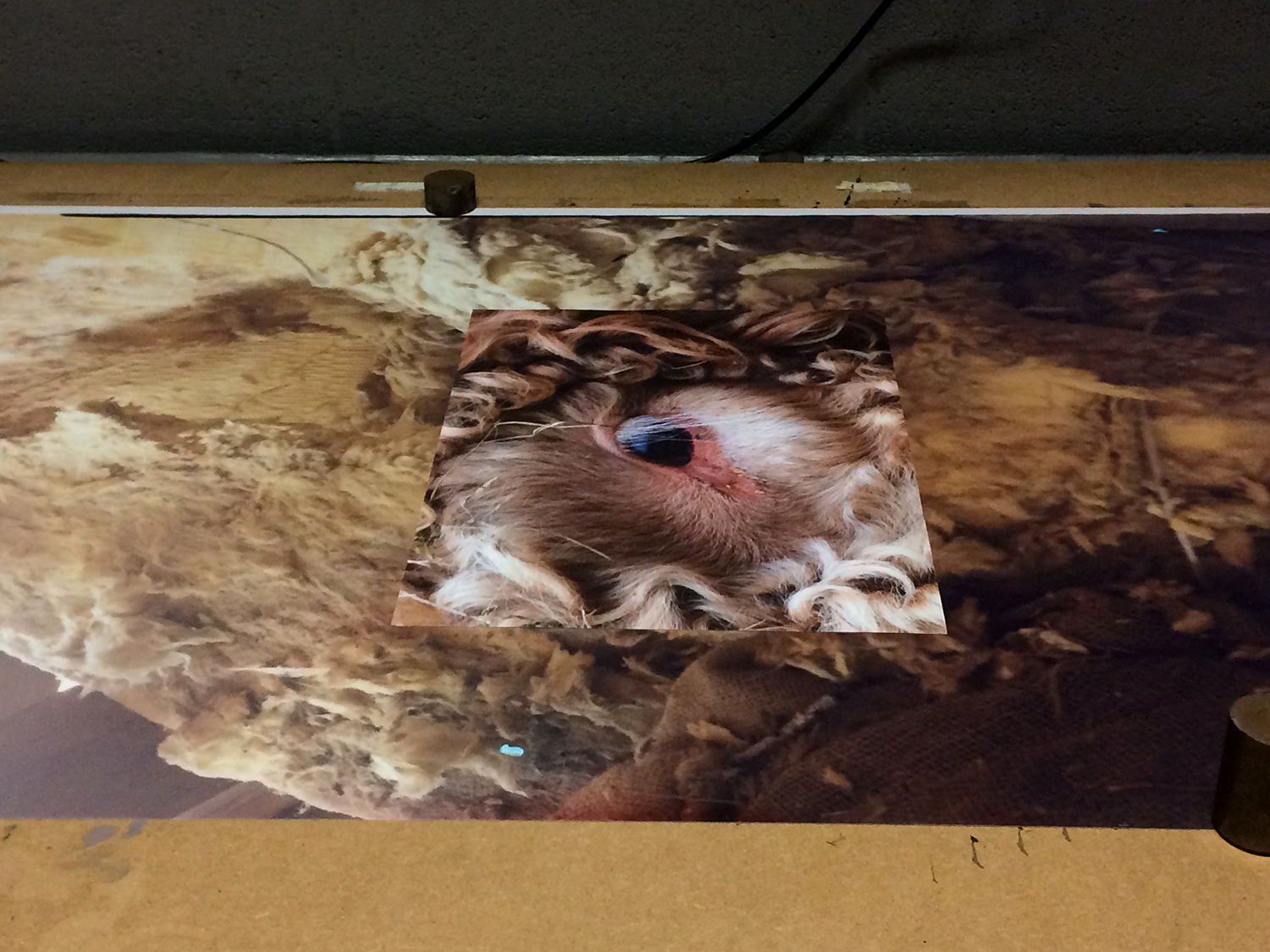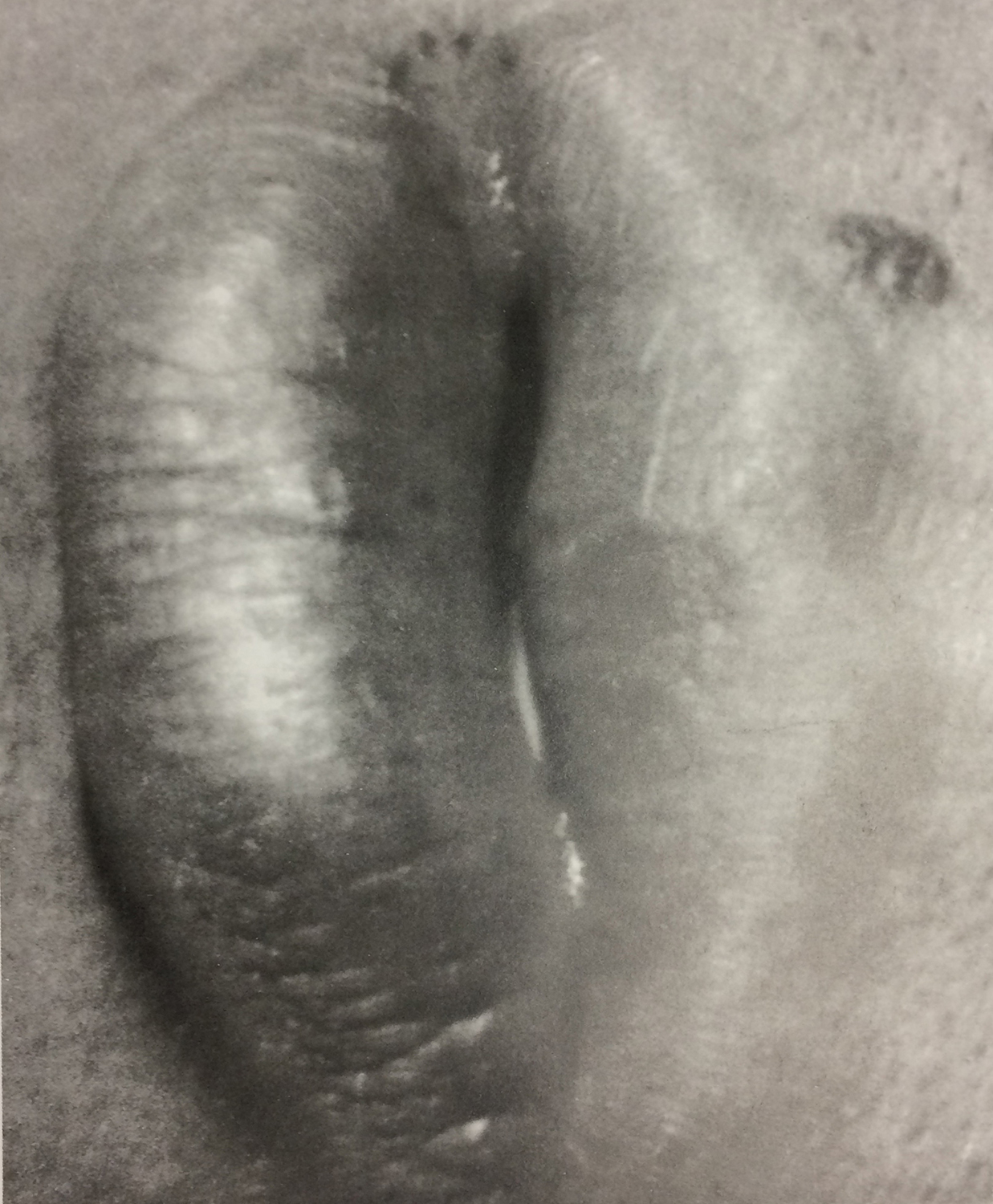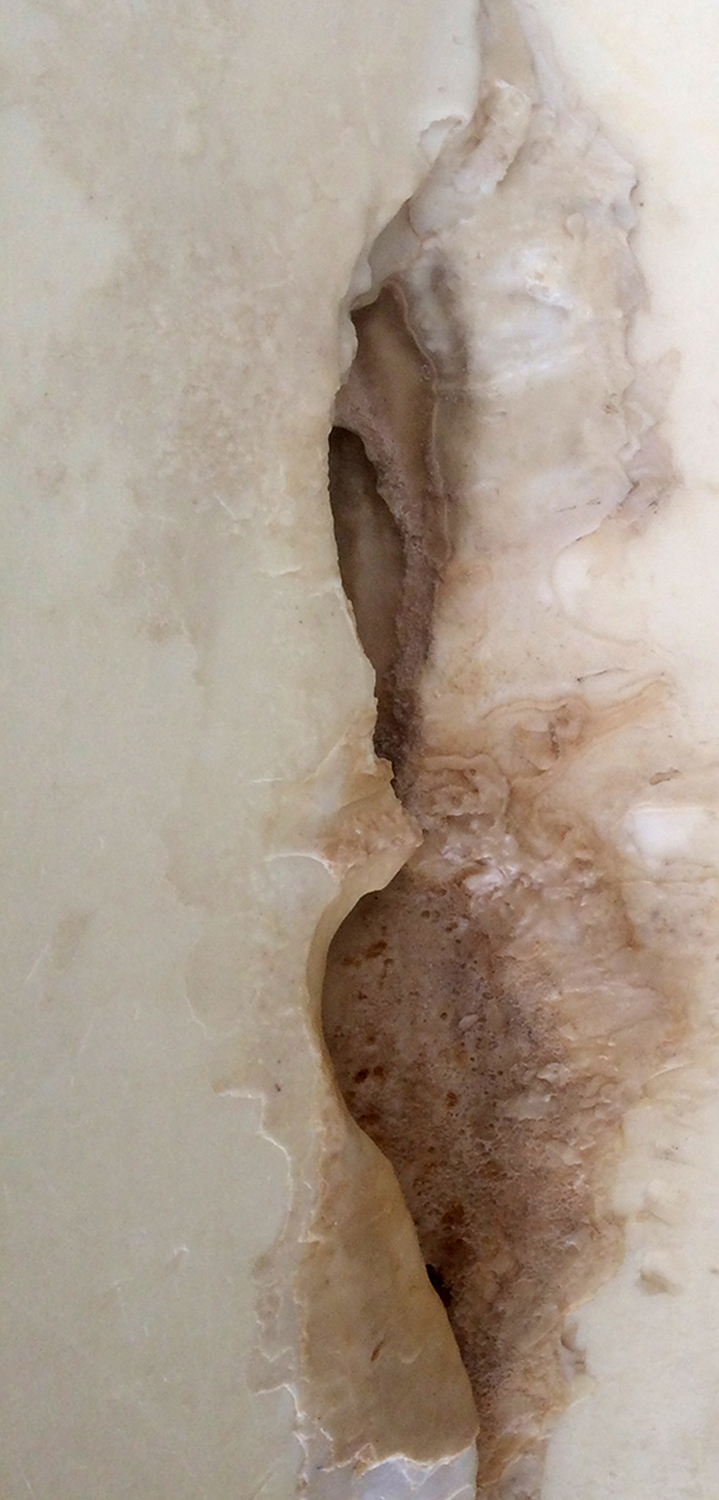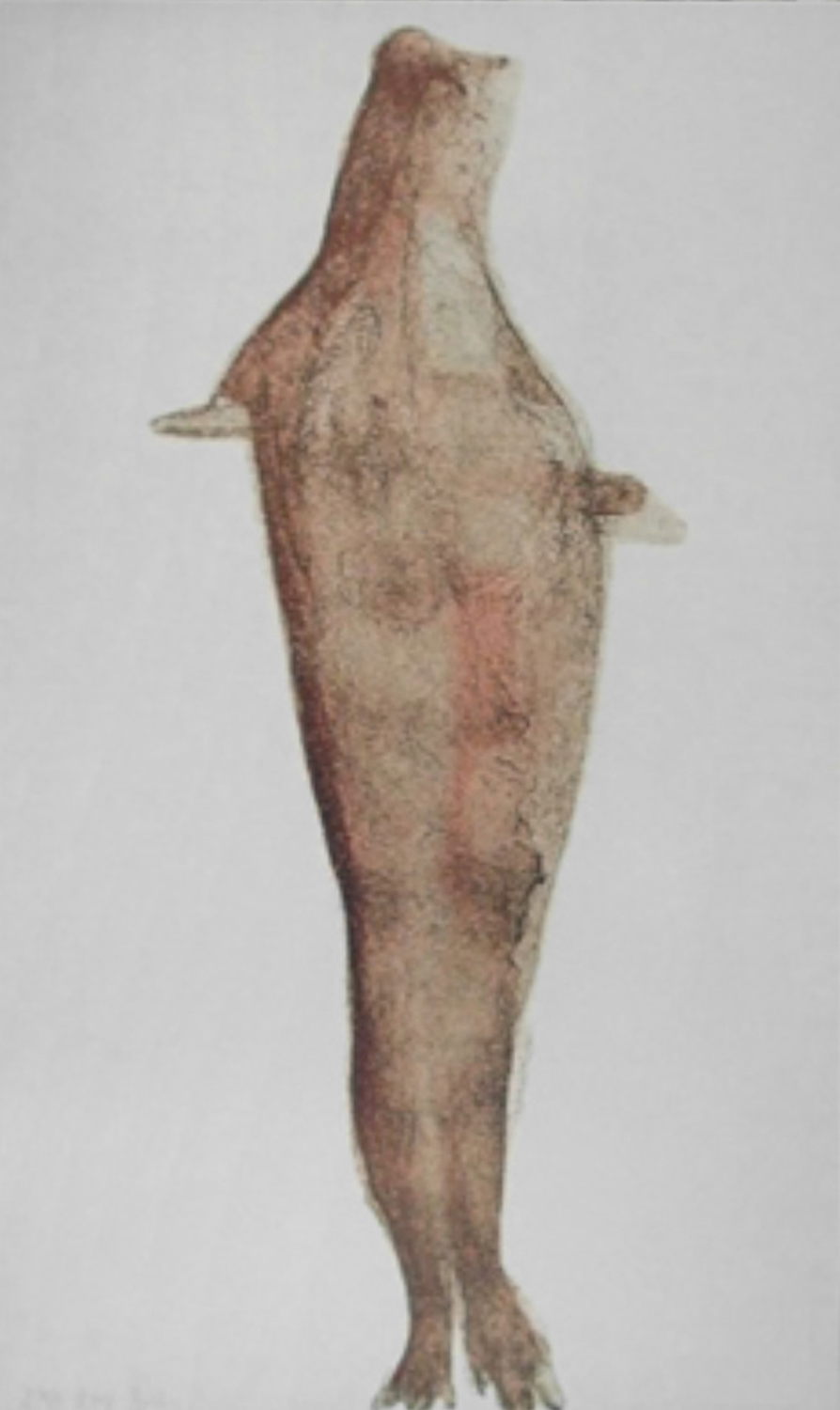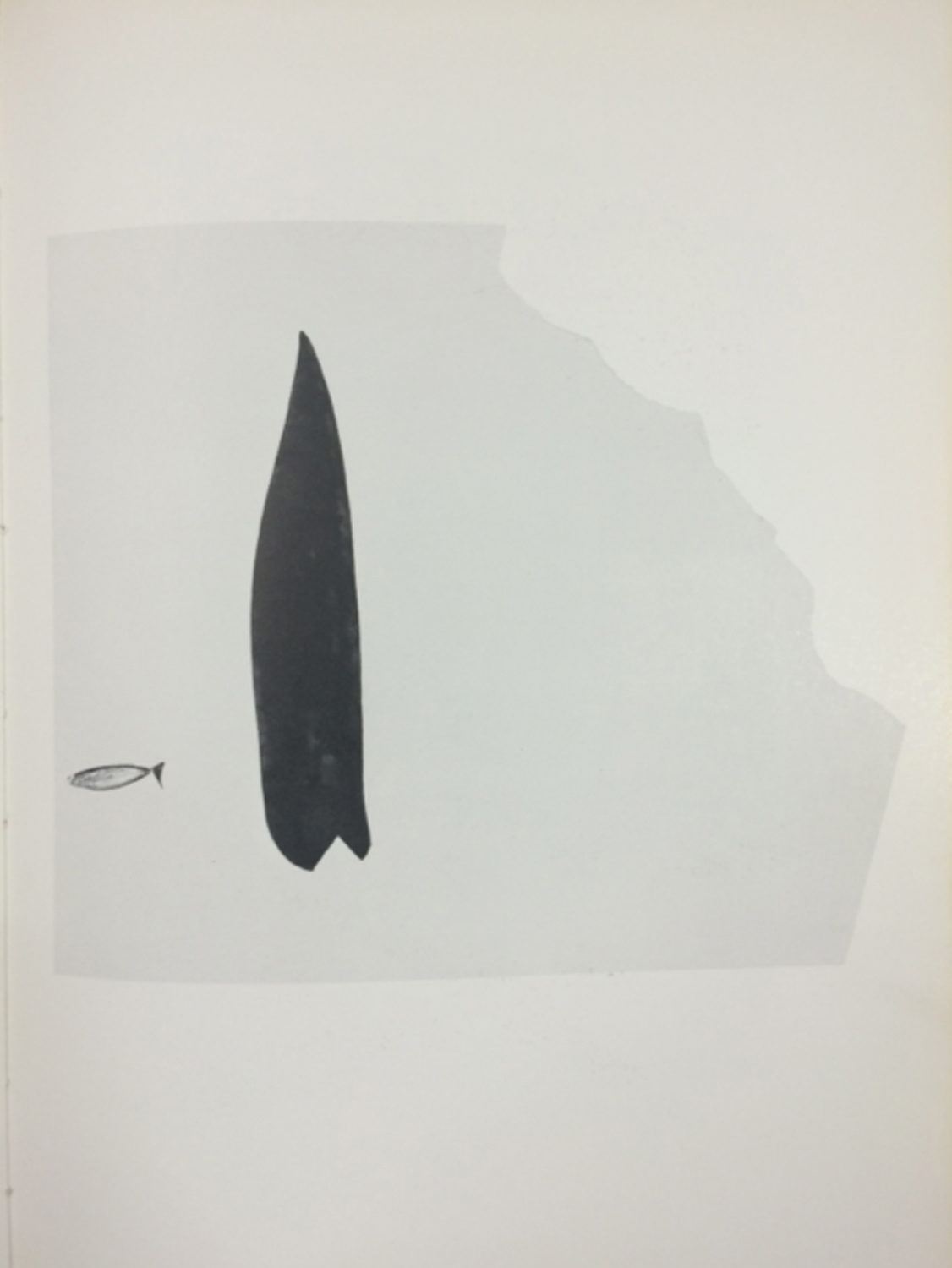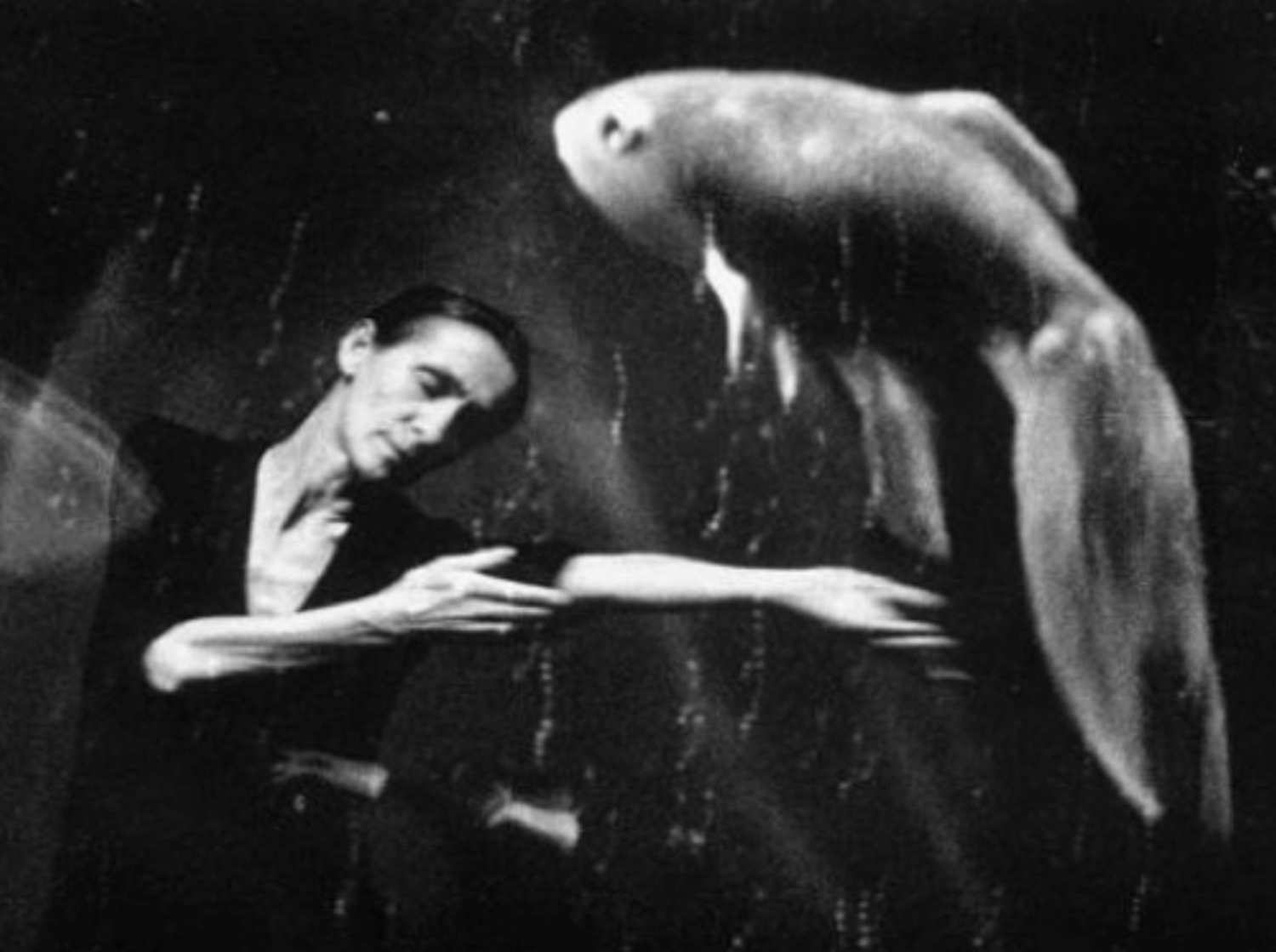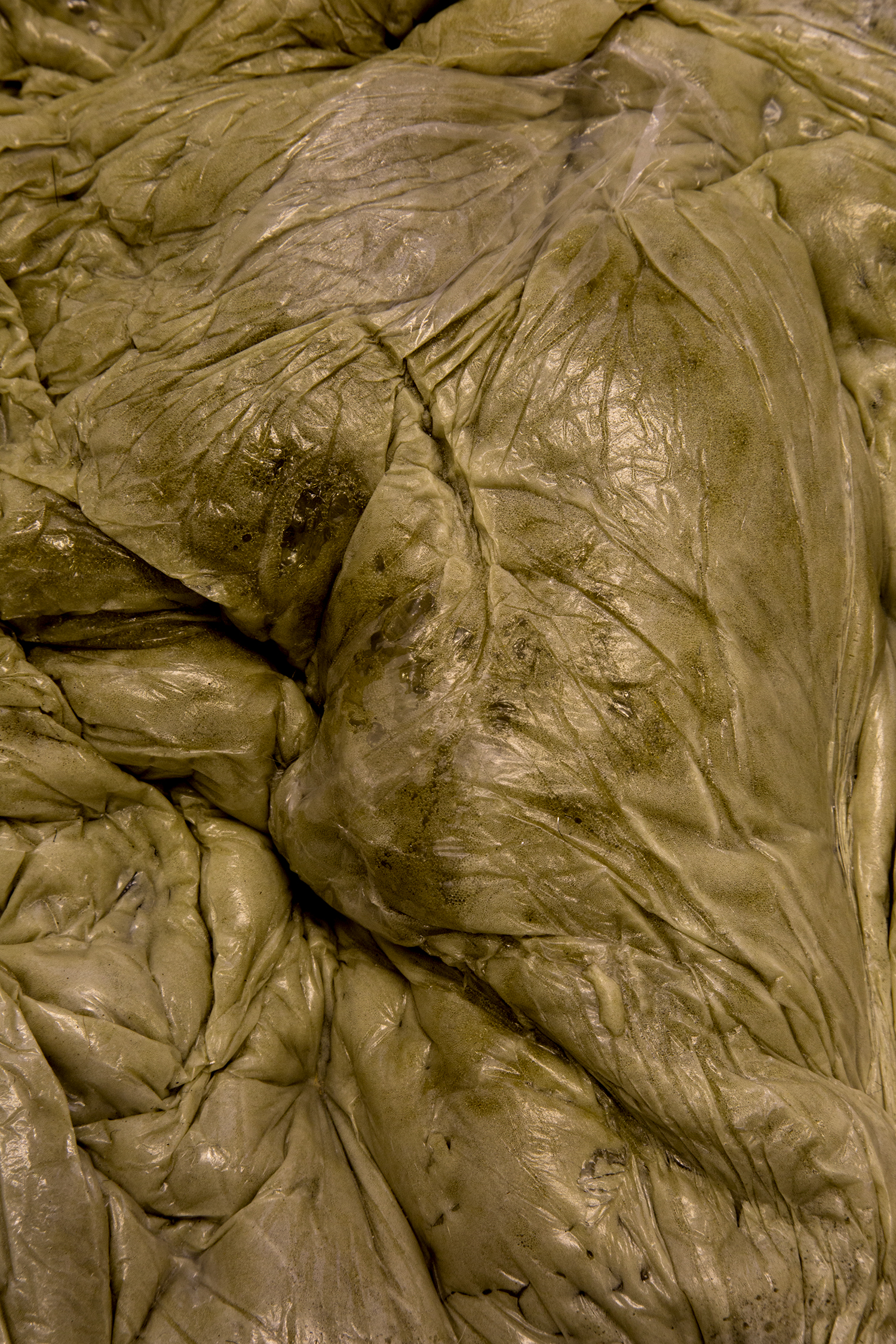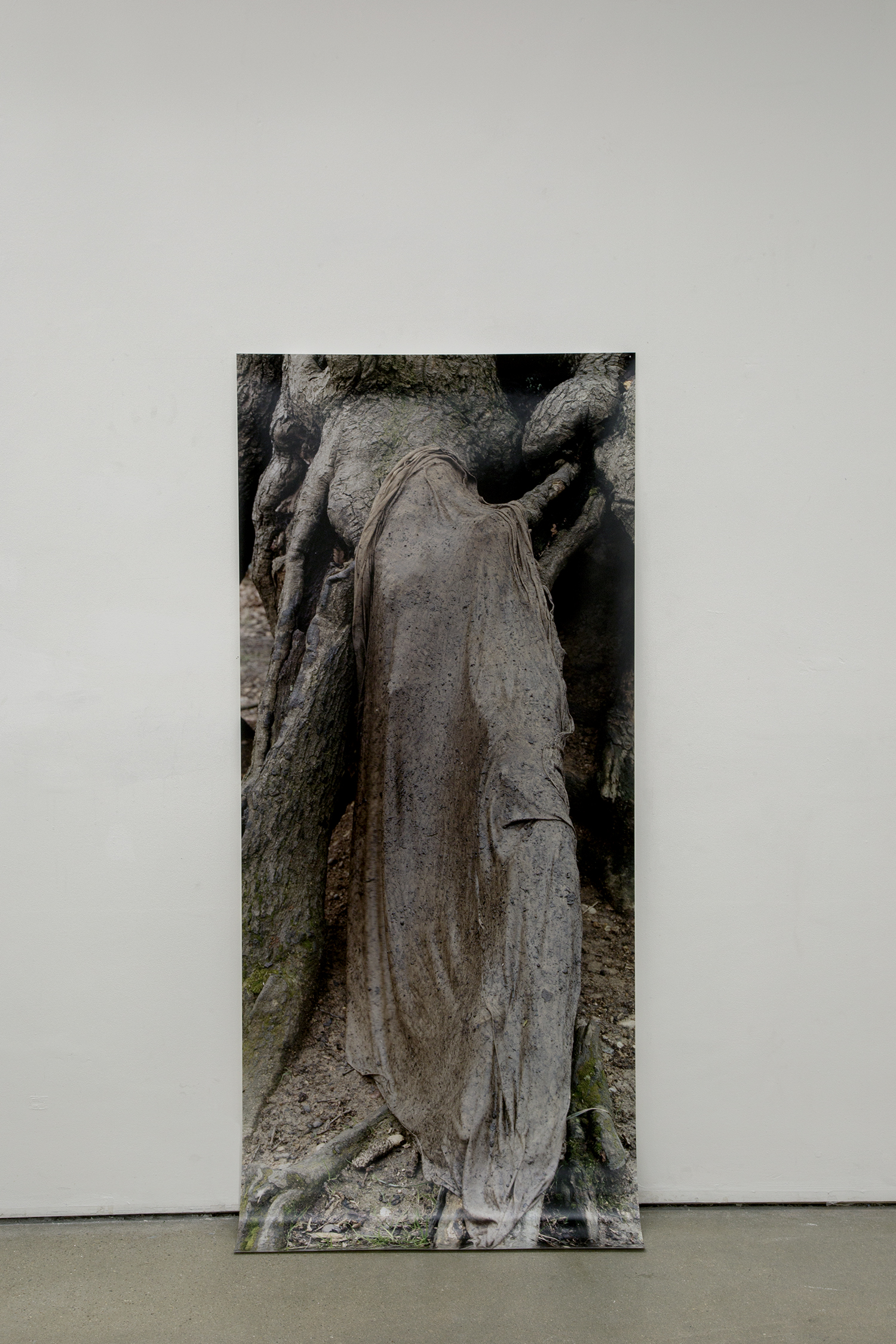Robin Butter
Artist Feature
Every week an artist is featured whose single image was published by Der Greif. The Feature shows the image in the original context of the series.
Ramona Güntert - Empty. Deflated. Rejected.
Feb 08, 2017
The objects in my photographs oscillate between two states, between the human and animalistic. And yet these objects are neither one nor the other. Deflated, rejected, they seem like bodies that have no inside, appear like something that feels like skin but is not.
Using domestic and natural materials, the images evoke alienating tensions, creating a sense of displacement and uncertainty. Juxtaposed with fragmented photographs of actual orifices, of eyeball sockets and lips, one enters into the work only to have the body that appeared disappear into darkness.
Throughout the work, I question what a body is and can be. I ask whether it is always human, or whether a body could also be non-human. My practice plays with perception, unsettling that which we think we know. Things are veiled, covered, yet in return something new about ourselves is rises up, like a feeling of rejection that grows from deep inside, becoming visible within the images.
A visceral unconsciousness seeps throughout the works, moving across the thin border between disgust and beauty. My childhood growing up on a farm is a reoccurring influence, informing my relationship to nature and touch. Objects slip into their natural surrounding, merging and disappearing, differentiation barely is visible. These slight gaps (like the difference between flesh and skin), appear as marks or scars, yet whose traces of wounds, these are remains unclear.
Artist Blog
The blog of Der Greif is written entirely by the artists who have been invited to doing an Artist-Feature. Every week, we have a different author.
Published in:
»Der Greif #9«
Stacks of sacks: Piles of flesh
Feb 14, 2017 - Ramona Güntert
Fabrics folding into each other, putting them on top of each other. These folds create shapes, just endless arrangement of form: form forming form. Sacks over sacks. And flesh over flesh. Materials like hessian, felt, dirt, soil or leather are often part of my work. This sense of touch but also rejection is leading back to my childhood experience on the farm of my parents. Pulling grass out of the ground. Carrying heavy hessian sacks full of apples. Or lifting itchy straw. These all feels like skin that I find in nature. Memories are like feelings, which I am trying to grasp. I know that I will not forget any of these sensations. While making art, the unconscious is shaping them back into form. Therefore they are not lost, just not in action. There are quiet sensations starring back at me.
Sometimes there are memories but are there images as well? Recently I spend a lot of time at my parents farm, thinking about the materials that have been removed from their original purpose, turned into something else. I feel like I have overseen them the last couple of years or remembered them in a different way. I never imagined that I would go back to take pictures. But now I enjoy exploring and creating new spaces in my old surroundings. I use materials like isolation wool or hessian sacks which is found around the barn of my parents and reconstruct them in a new form for the photographs. For me those objects often seem purposeless or strange. I just do not know it or understand it. I am making my own arrangements, creating my own beings. Therefore it is a way of understanding.
Sometimes there are feelings but are there images as well? I remember smells. Smells are entrances to memories. What do I remember? Liquid is smell. Smell is an extension of experiencing another body. I am fascinated how Jean Baptiste Grenouille in the book The perfume by Patrick Süskind creates scents of objects, through the process of distillation, which is another way of transformation and purification. In the book it is described, “He distilled brass, porcelain and leather, grain and gravel. He distilled plain dirt. Blood and wood and fresh fish: his own hair. By the end he was distilling plain water, water from the Seine, the distinctive odour of which seemed to him worth preserving. ” (The perfume by Patrick Süskind) The materials which he uses and the notion of senses, I feel, are similar to my work. Its fluidity, coldness and wetness. And also the sense of disgust is reflected in my images.
How can I create and recreate these feelings of relating to someone (body) or to somewhere (space.) I think that this inner desire can be found in nature. This weekend I had the opportunity to visit Kurt Schwitters` Merzbarn in the Lake District, England. The Dada artist used disregarded objects, rubbish or things which he found in his surroundings and collaged them into something new. It is a space where he would live and work at the same time and through that it became an artwork itself. Plaster and objects are growing out of the wall. Schwitters`way of working is very inspiring for me, makes me aware of my own presence in a space. Even though the original wall is not there anymore (they had to remove it in order to restore it), you still feel the power of his work in and around the barn, which I could experience this weekend. The reproduction of the art work printed on canvas and leaning against the original wall, opens up a new interesting discourse about absence and presence. “The expressive surface, as its very body appears about to slide off into a formless mass of plaster and paint masquerading as something softening under its own weight.” (Schwitters in Britain, Tate) Being, becoming and growing out of the wall, is an interesting starting point to think about how to show photography in a space on the wall or printed in a publication.
Unheimliche Ungeheuer: I wonder what it feels like
Feb 11, 2017 - Ramona Güntert
to wear someone else’s skin.
to not have a body.
to be empty.
In my previous post I was writing about different shapes and how they are appearing and disappearing in my work. Humans who turn into animals and become other. Creatures who are born out of flesh or different materials, going elsewhere. I always had this fascination for characters of different myths. And therefore what it means to believe in their existence and how I can trigger this memory of uneasiness or repulsion from the stories in my photography. I take fragments like the long nails or hair from Struwwelpeter, or the idea of the eye in the sandman as inspiration and reconstruct them in my images. For me photography is not a way of documenting something or telling a story. It is rather about creating a feeling or a taste of something that I hope, will stay with you and make you think of your own body and the relationship to others.
In one of my images above, you can see a tree, which almost looks like a big growing mushroom. I am intrigued by the colours and shapes because I cannot tell what it is or where such a thing could exist. I made this print from a glass negative, which I found recently in one of the vintage shops in Brighton. The tree looks like it was constructed with expanding foam and painted with different layers, making the photograph disappear. It is also interesting how you can see the camera in the background. Someone must have taken a picture from the other side. I imagine me standing there. It could be something I would photograph or make.
We find ourselves in an imaginative world, a space which seems impossible to enter. Similar to my images, where it can be difficult to find a way in. I use fragments of the everyday; transform them through size or material of the print. Hence it becomes more of a bodily experience similar to the one of printing large in the darkroom. Seeing the photograph projected in life size onto the board, gives me a strange feeling of someone else’s presence. Seeing and creating is an act of becoming: different constellations are being born, moving from one to the other. Hesitation sometimes stops me, in stopping, make me wonder, and then stare into emptiness, such divine emptiness.
“Off bodies changed to other forms I tell;
You God`s, who have yourselves wrought every change,
Inspire my enterprise and lead my lay.
In one continuous song from nature’s first
Remote beginnings to our modern times…
Of nature was the same, all one, well named,
Chaos: a raw and undivided mass.
And the bright constellations; in the sea.
He set the shinning fish to swim; the land received the beasts, the gusty air, the birds.” (Ovid, Metamorphoses.)
Fish and I
Feb 10, 2017 - Ramona Güntert
Imagine two circles meeting. An oval shape (Schnittstelle/interface) is created in the middle, an extension of the connected two circles. Oval shapes are like transformed circles, flatter, but more open than round as a shape itself. Bodies are oval shapes. Shapes of trees in comparison to legs, shapes of fins in comparison to legs: shapes becoming yet more shapes. Eyes look like mouths.
My imagination keeps spinning in circles. It becomes more absurd, but that is probably how the mind works. Or that is where the two meet. Adding means touching. Subtracting means wounding. While emptying it, the middle part becomes a gap, a cut. Shapes like that are reminders of how close humans and animals can be. Fishes have shapes of mouths, jump into water: they look like eyes. Strange that they look like eyes but then there are stranger things. I keep returning to fishes over and over again.
I feel close to them. I feel related to them. The idea of fishes are similar to my ideas of not having a body or of loosing control. I often imagine how it might be like having a body but not possessing my own figure. Swimming, slipping, sliding through water. I remember someone saying: “You are neither fish nor bird.“ Since then I’m wondering what it would feel like not being able to swim or to fly.
The image of the silver cloth in a barn looks to me like a fish. I touch it but it does not feel slimy. It is soft. I pick it up. It hangs down from my hand to the floor. There it lies: myself touching myself, touch seeking touch, and with this the desperate need to feel anything. Maybe someone else could do that for me. The skin – like material is hanging down. Touching me, touching the floor. I stand there barefoot on the cold concrete. My body feels heavy, so heavy. I lay down the floor flat and as I do so, I sink into it.
“But if all that was left of me was an empty shell, what I had previously been was now dissolving in the ether, almost harmoniously becoming part and parcel of reality of absence and emptiness, more gas now than solid.” (Darrieussecq, Marie. My phanthom Husband. )
Body collapses and in its collapse, disappears
Feb 09, 2017 - Ramona Güntert
Sliding, slipping, never in one place, always moving. Backwards and forwards. Never resting. But what lies in between? Between me and photography, between two skins touching or between us and nature.
I keep returning to a rather scientific description of a friend: “Human cells are grown in a tissue culture flask. The gap in the middle is a scratch wound in the tissue. During the process of healing the cells migrate towards each other in a very mysterious way as if they are connected by an invisible bond- Smallest signal molecules coordinate their movement and communication.“
Fibres growing through the materials like veins through the body. The inside collapses and the skin takes over what once used to be a body. Empty or full, that does not appear to matter. How can they touch each other again if they are no longer one? Is the old growing back together or will something new become? Making whole seems to be the most difficult task. Taking two separate things that used to be one. During the process of healing, the old is endured to create the new.
In the video Touch me – not I explored ideas around the body and its transformation through different states. It is always a becoming, a form forming form, from one point to the next, without end. The mass is flesh, but then something cannot just be flesh. A mass seems always solid, unbreakable. Bodies are liquid, flowing from one thought to the other: they are unstoppable in this, unstoppable.
“Orifices, pores and portals of all skins, scars, navels, blazon, pieces, and field body by body, place by place, entry by entry, exit by exit. A body is the topic of its every access, its ever here/there, its fort/da, its coming – and – going, swallowing – and spitting, breathing in/breathing out, displacing and closing.” ( Jean Luc Nancy, Corpus.)



